Abstract
Results are given for one of a series of projects designed to investigate the relation between observable post-vaccination responses and acquired resistance to tuberculosis. Controlled variations in the dose of BCG vaccine have previously been shown to cause systematic variations in the degree of skin sensitivity to tuberculin and the size of vaccinal lesions in human beings: the purpose of the present project was to see if similar variations would be produced in guinea-pigs and then, by infecting the animals with virulent tubercle bacilli, to see how survival time correlates with tuberculin allergy and vaccinal lesions.
Four doses of freshly prepared BCG vaccine, ranging from 1/100 to 10 times the dose ordinarily used for intradermal vaccination of humans, and one dose of heat-killed BCG 100 times that strength, were used to vaccinate five groups of guinea-pigs, each containing 120 animals. A sixth group of 120 animals was not vaccinated. All animals were tuberculin-tested just before and five weeks after vaccination, challenged with a strong dose of H-37 Rv, and then allowed to die, so that survival time could be used as a measure of resistance.
As the dose of living BCG was increased, groups of guinea-pigs showed a progressive increase in the average degree of post-vaccination tuberculin allergy, size of vaccinal lesion, and length of survival after virulent infection. The heat-killed BCG resulted in weak allergy and a short survival time, yet the vaccinal lesions averaged about as large as would be expected from a corresponding dose of living BCG. These results (excluding studies of survival time) correspond closely to those found in human studies.
The implications of the results with respect to practical BCG vaccination programmes, while no more than speculative at present, point toward possible advantages in inducing high degrees of tuberculin allergy and toward the dubious significance of the vaccinal lesion as an index of a vaccine's immunizing potency.
Full text
PDF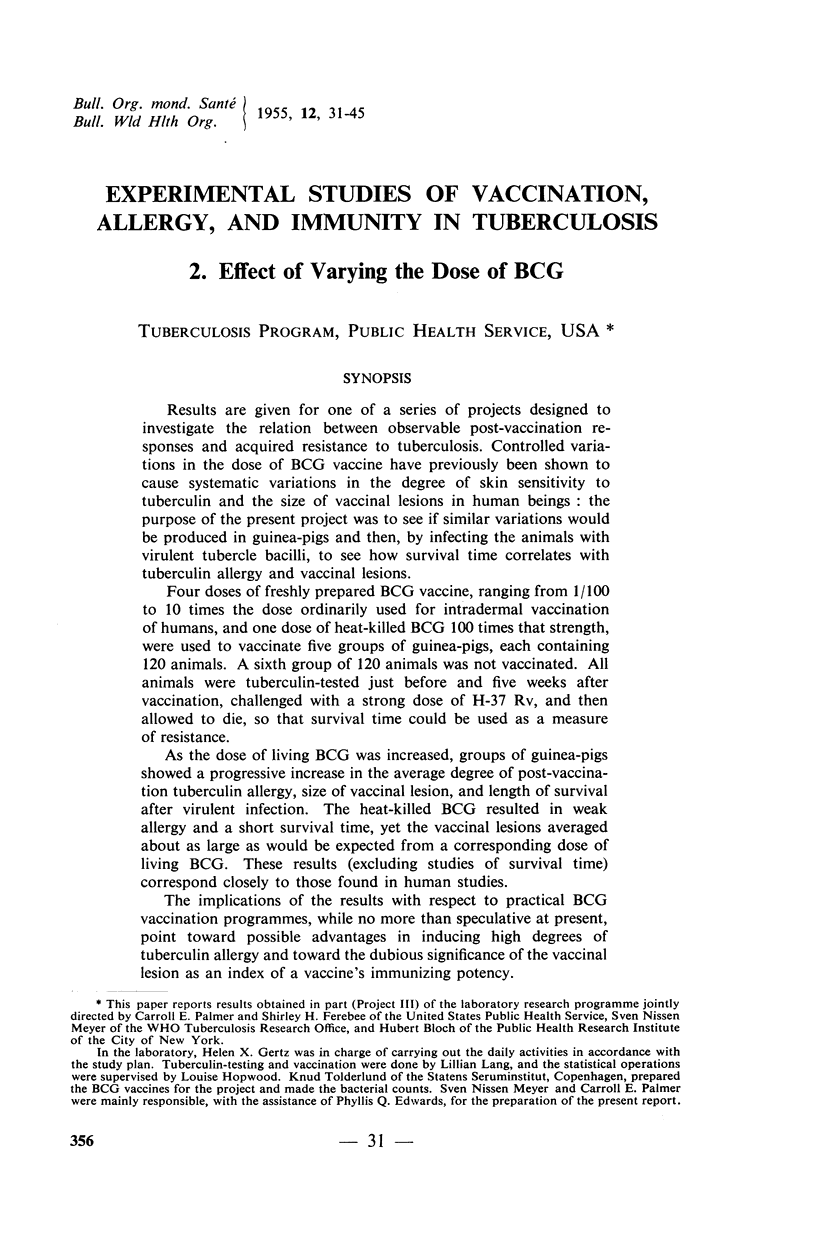
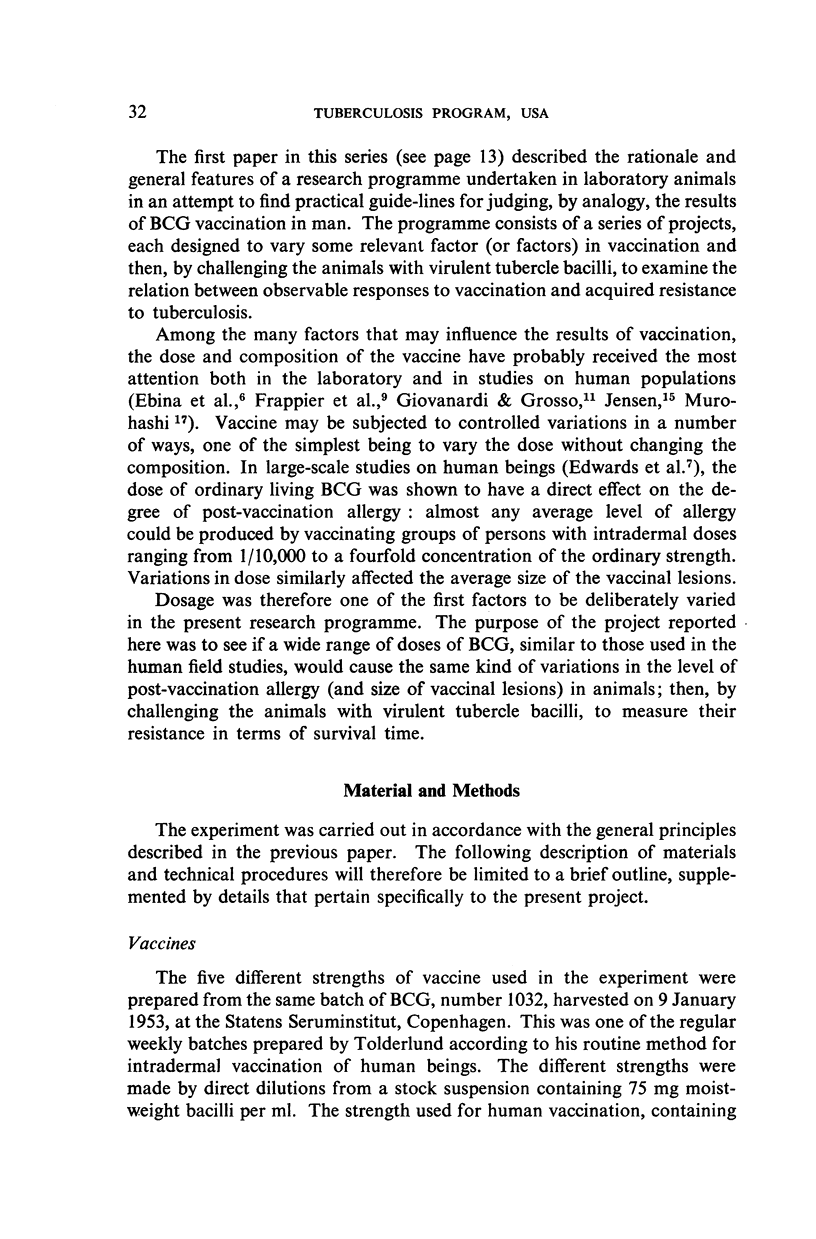
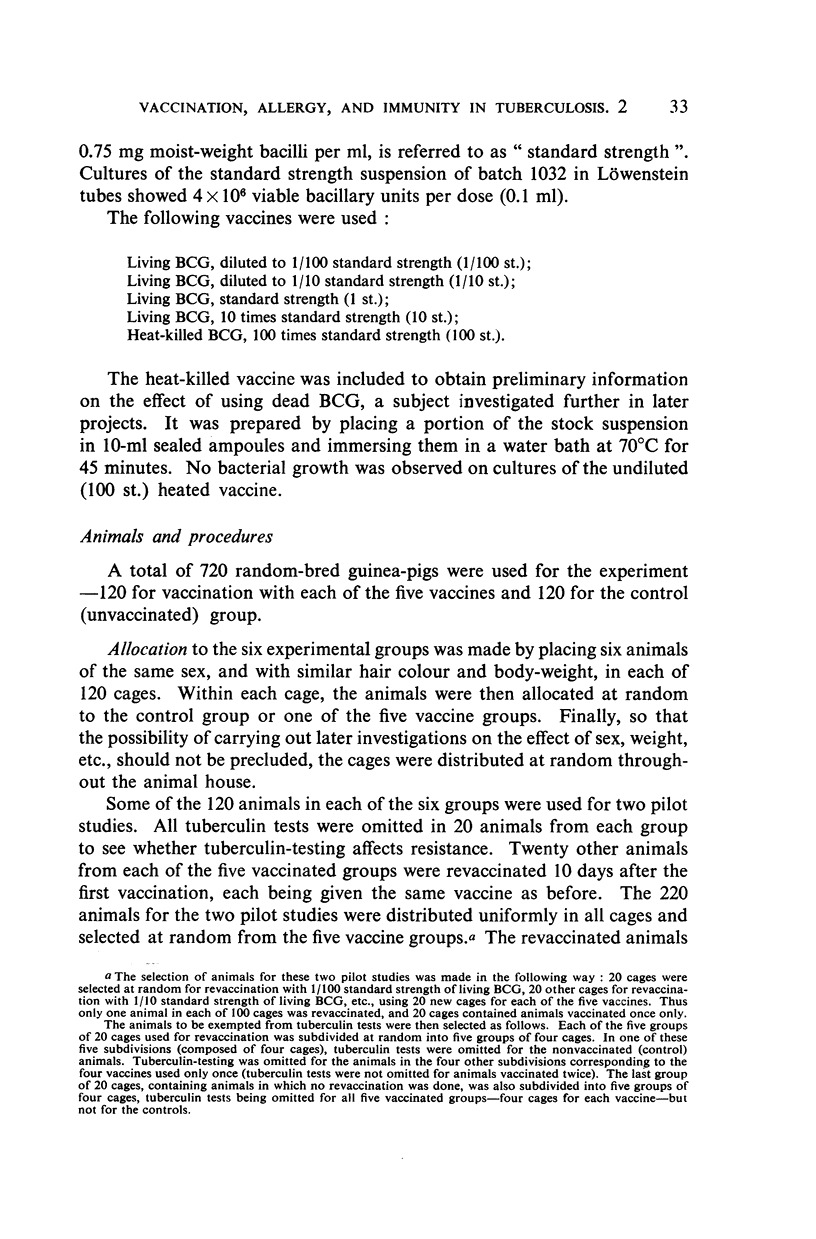
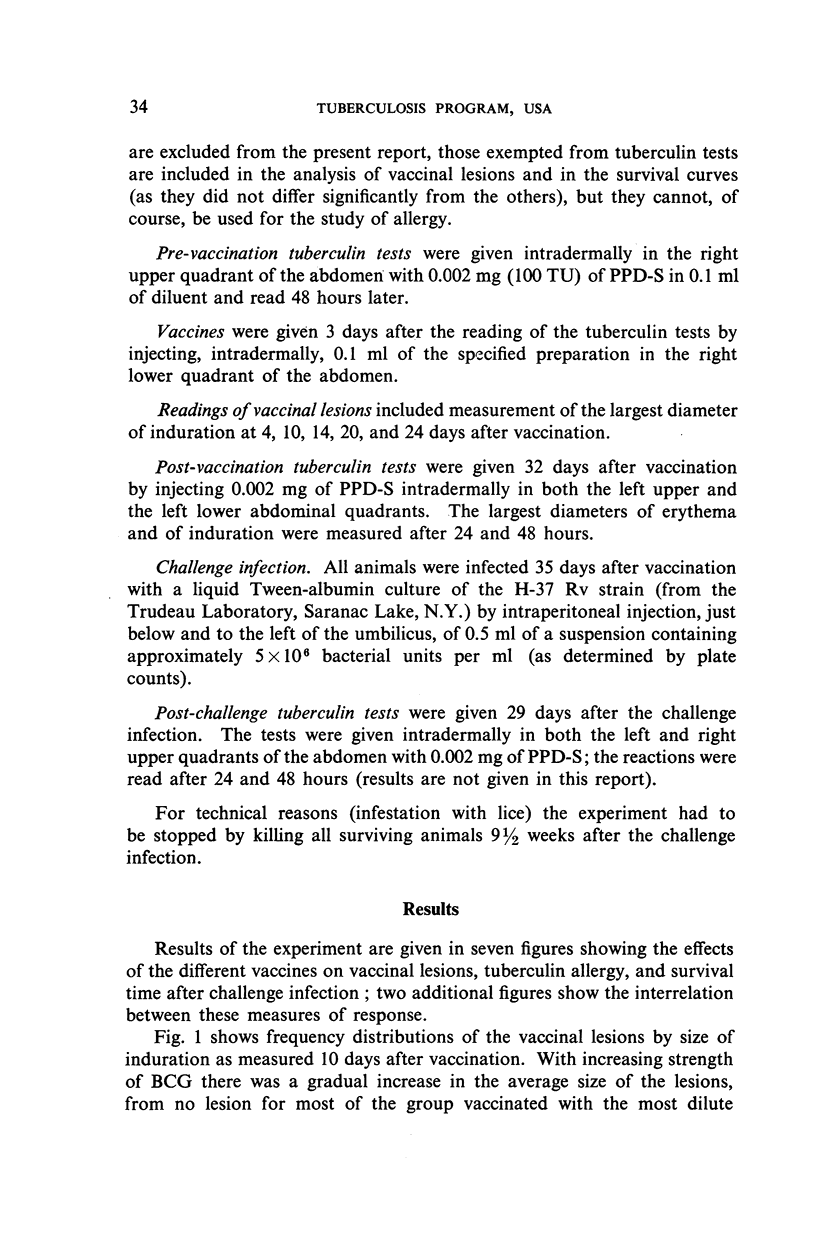
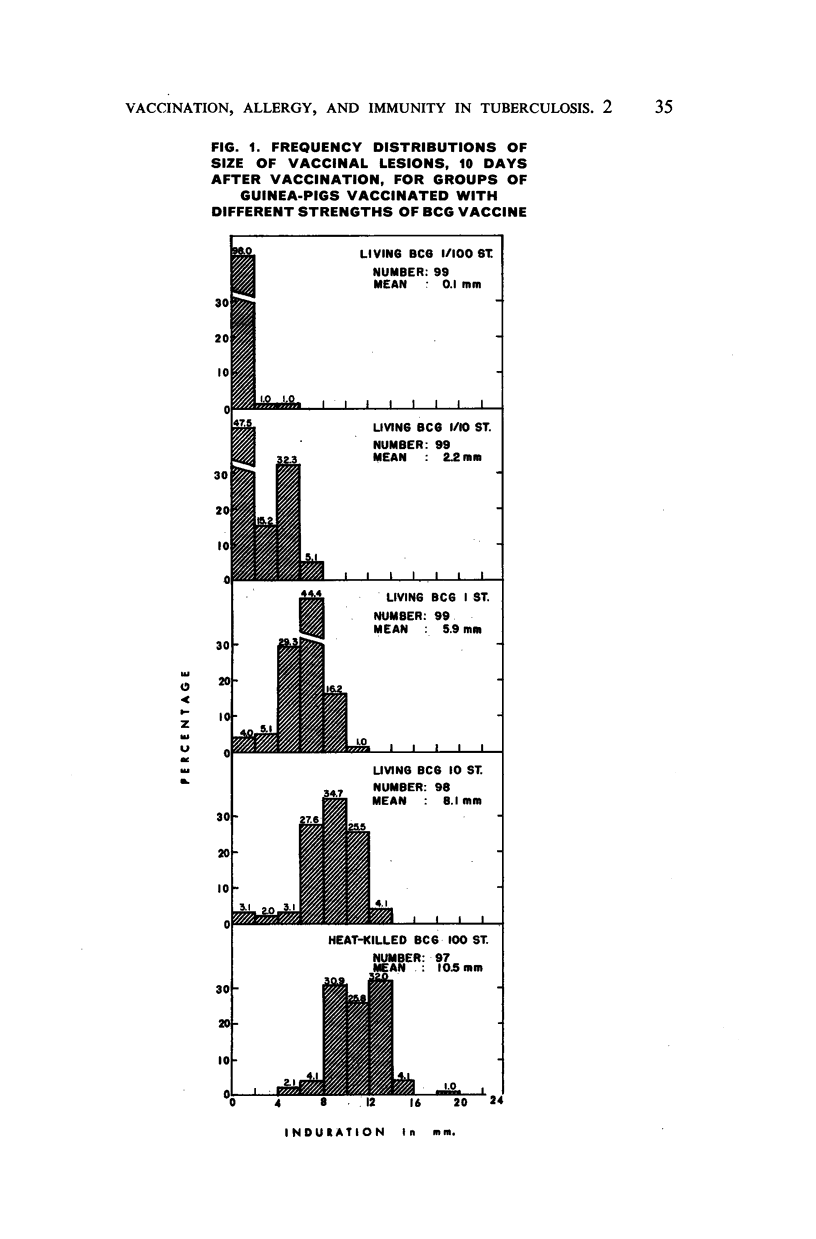
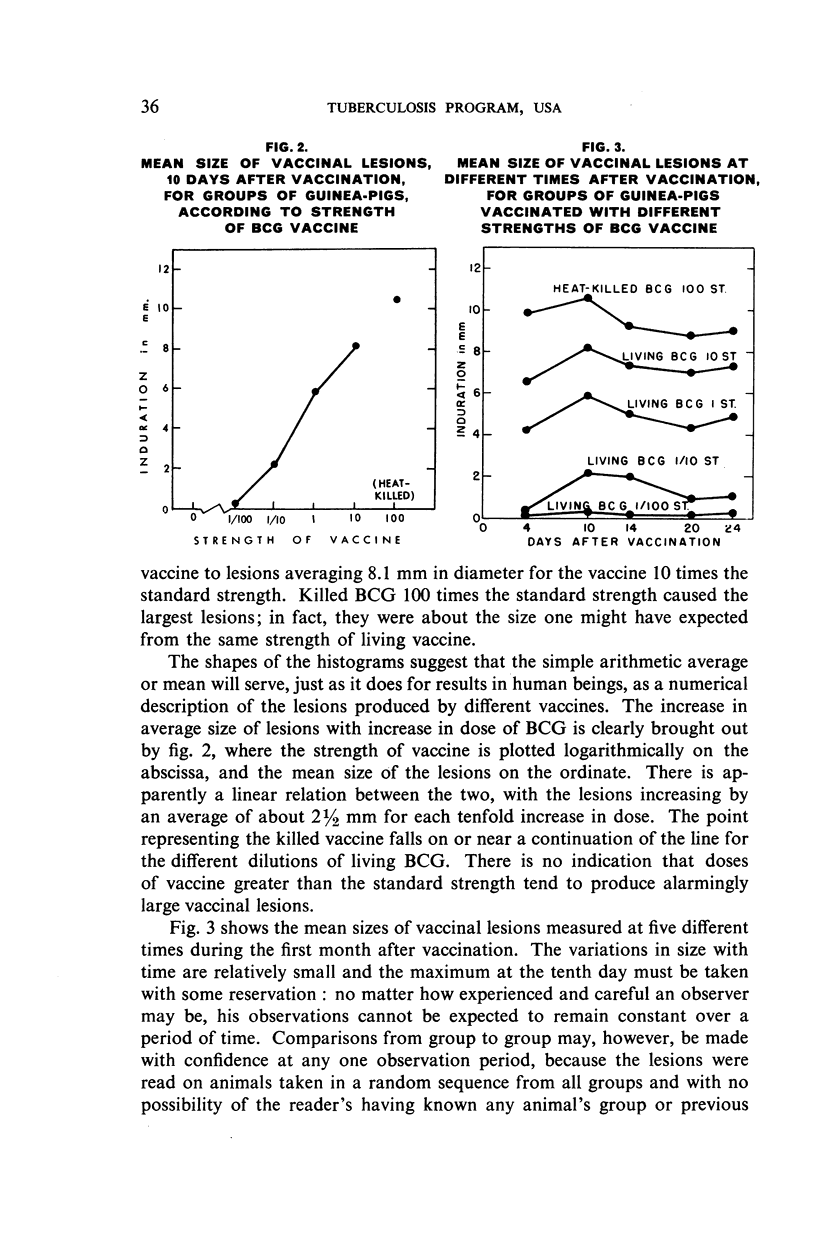
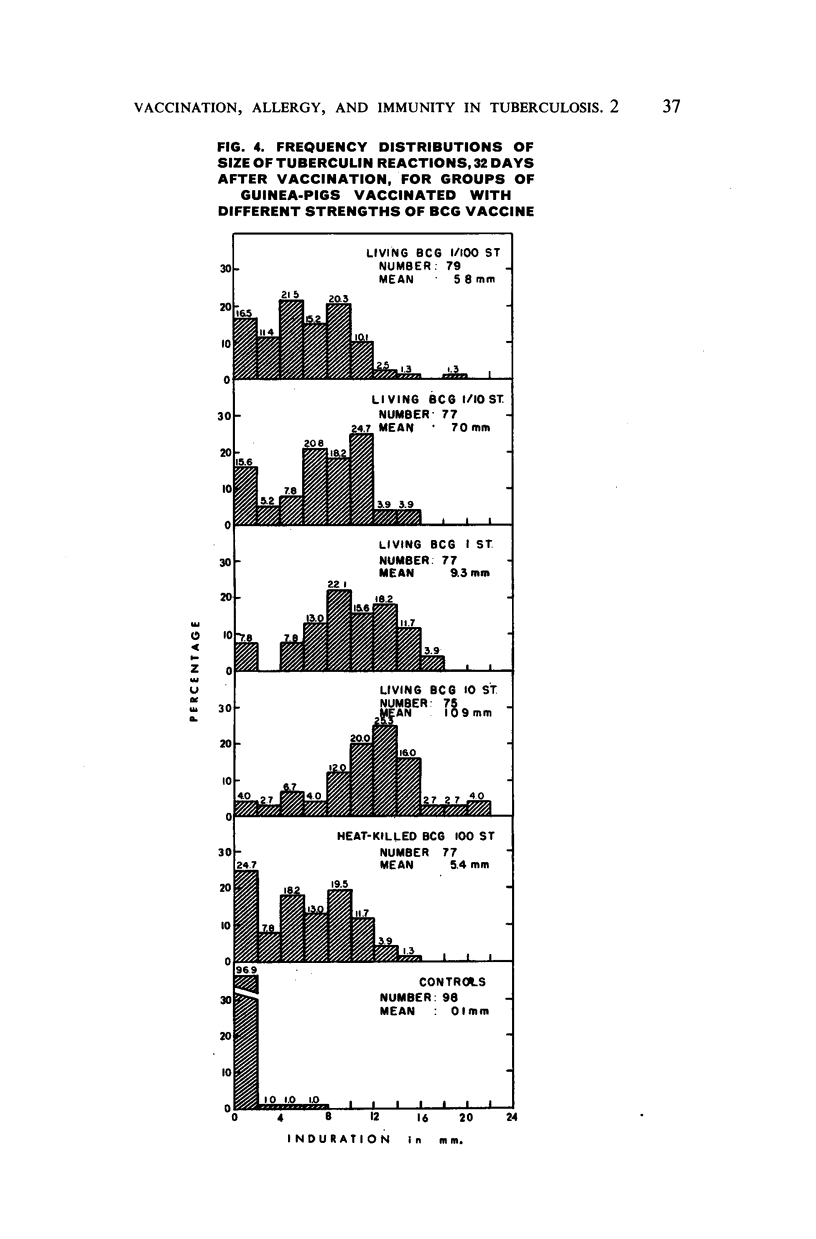
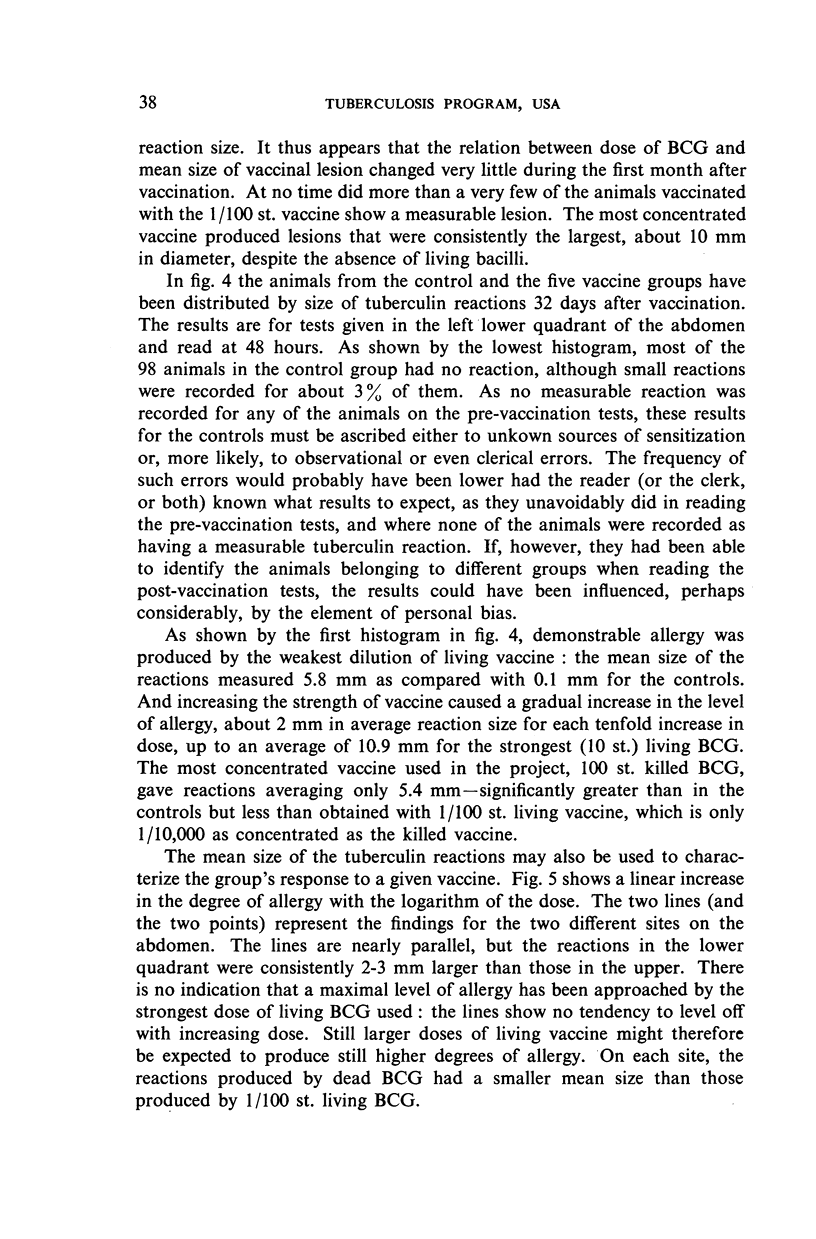
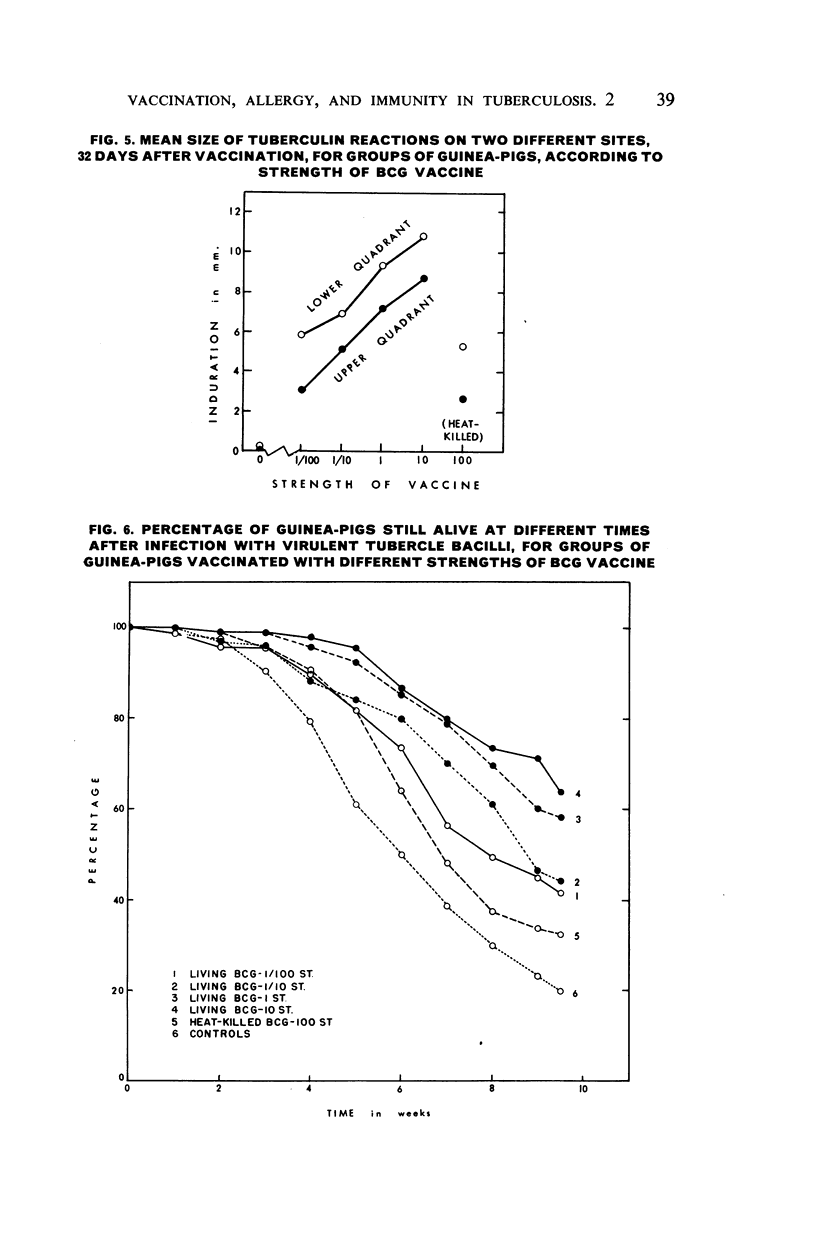
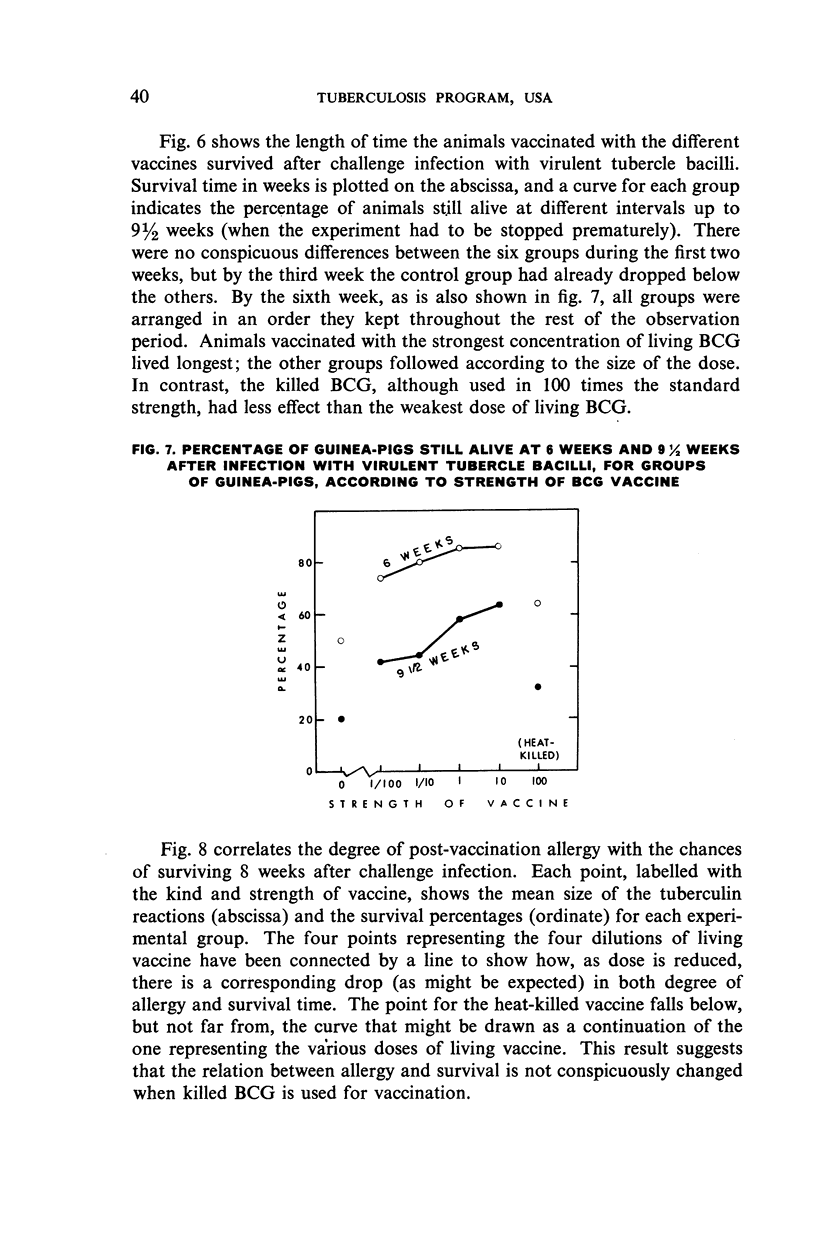
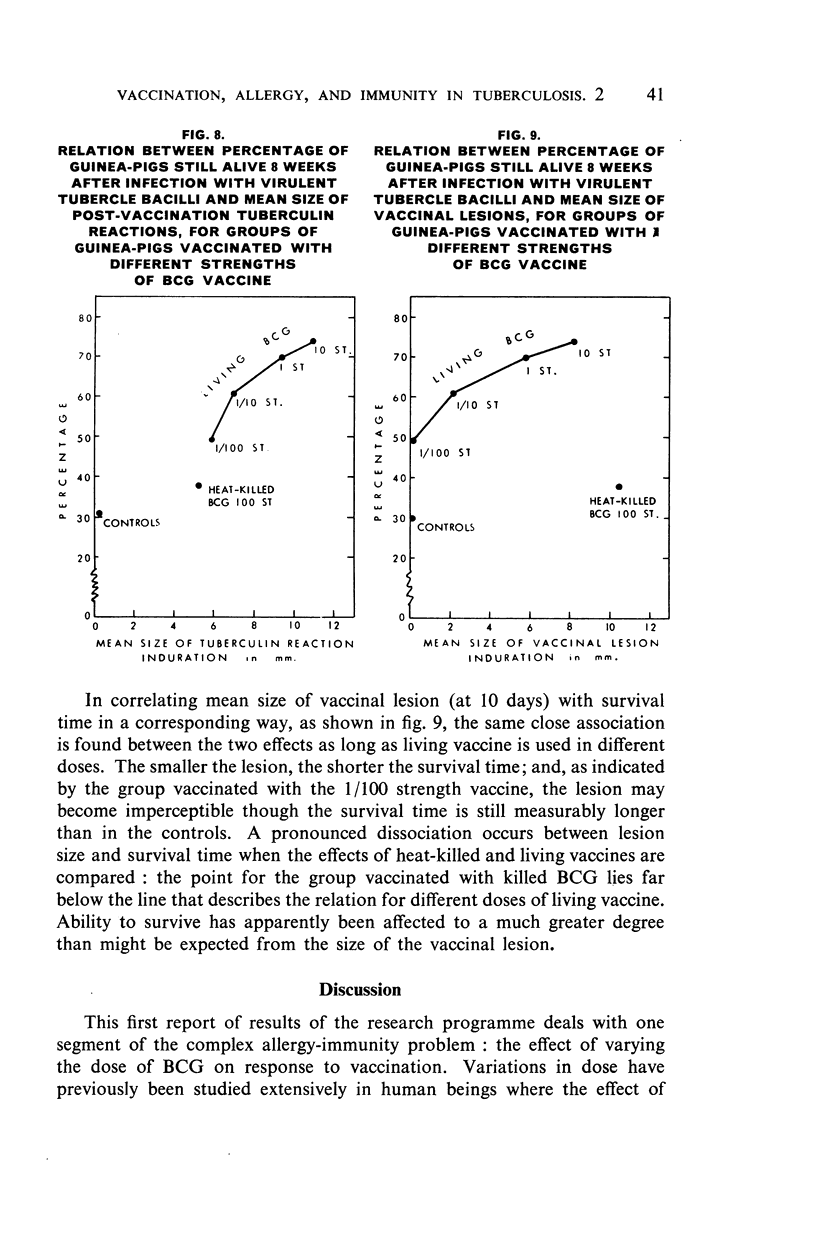
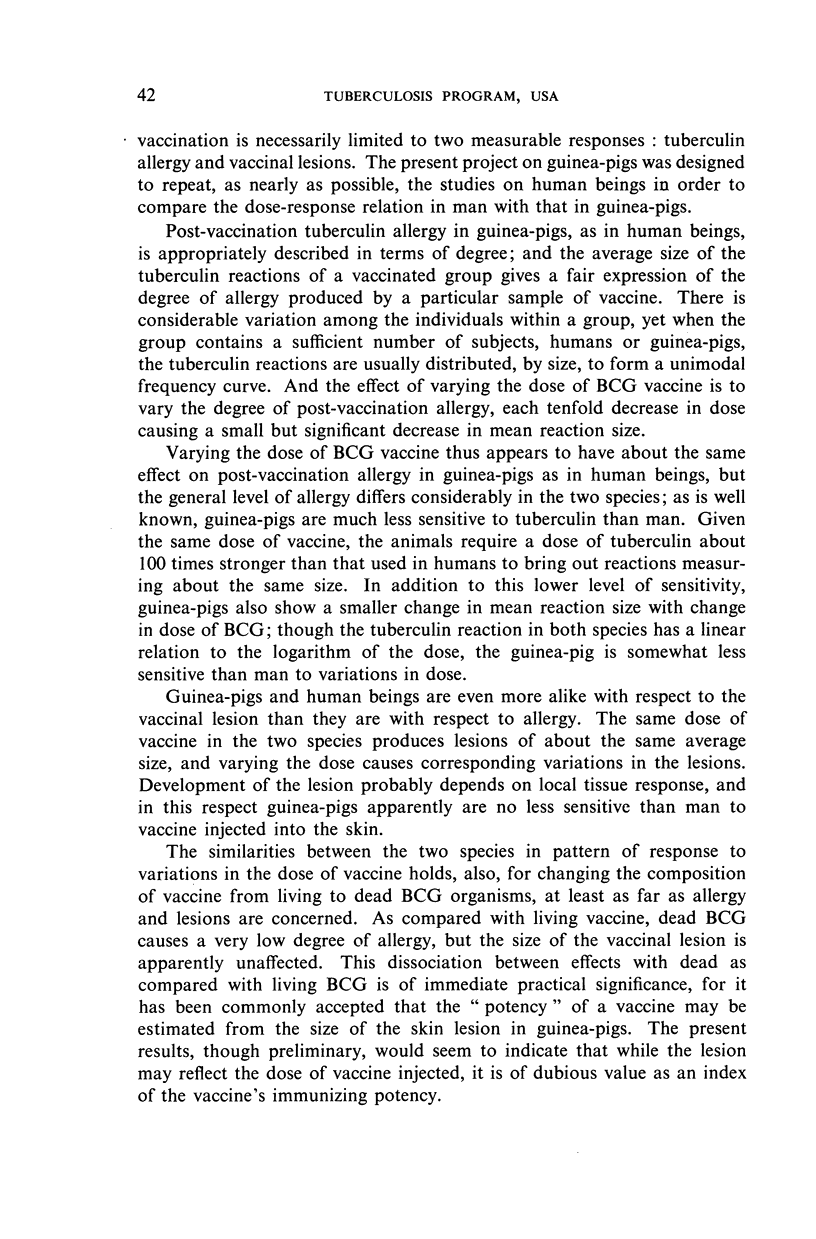
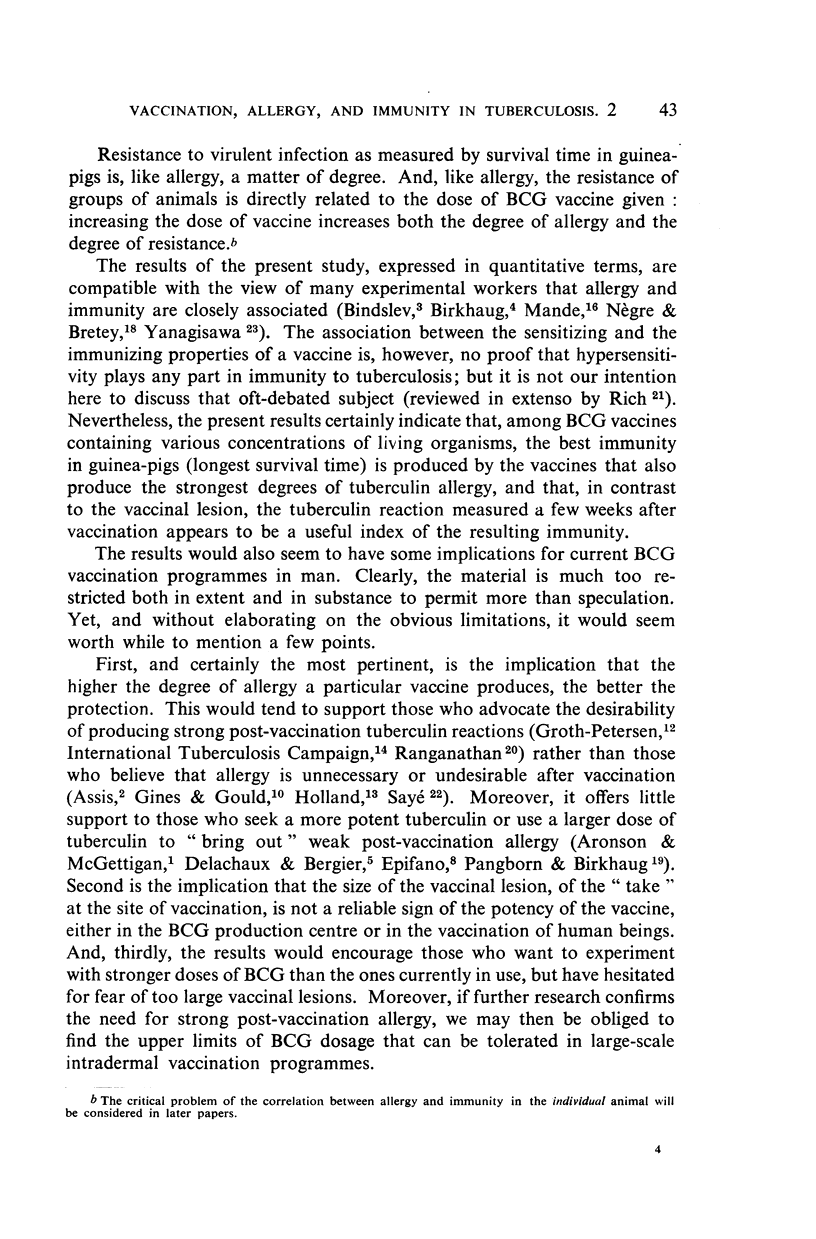
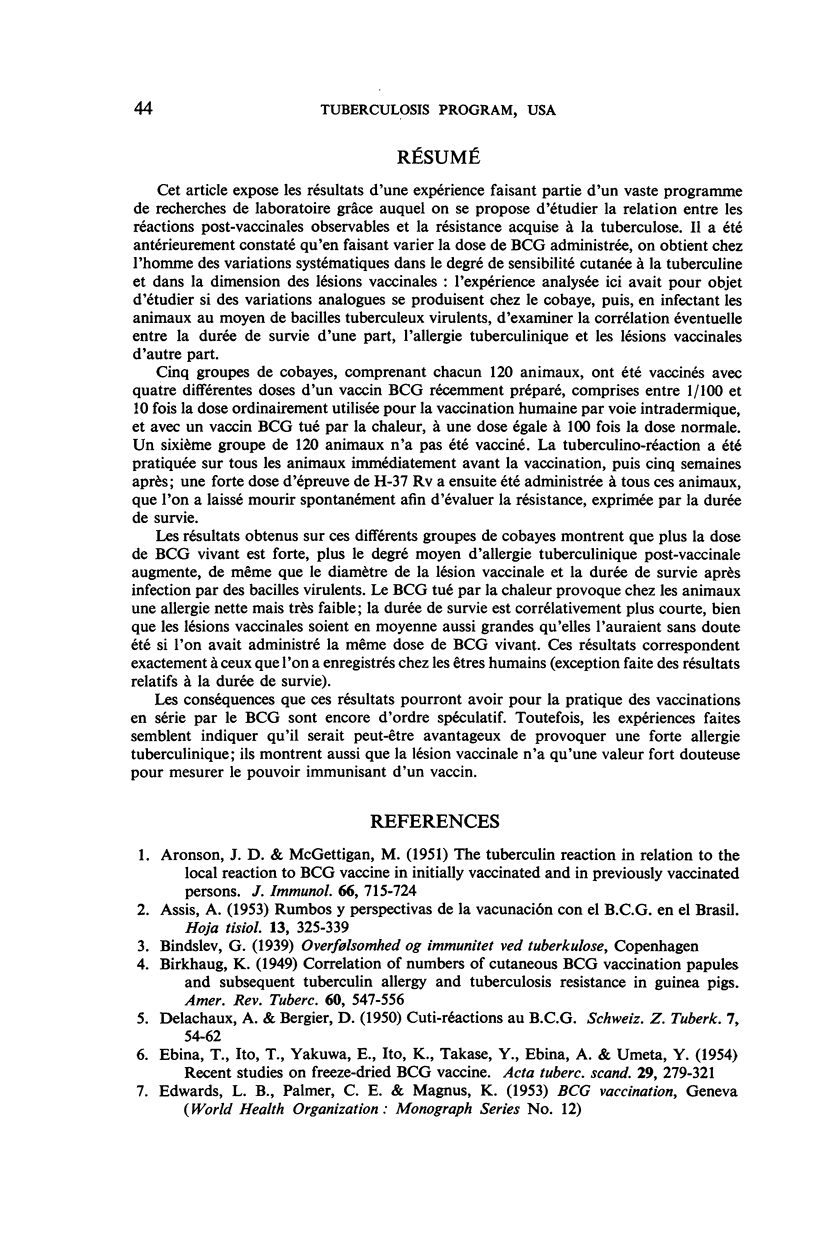
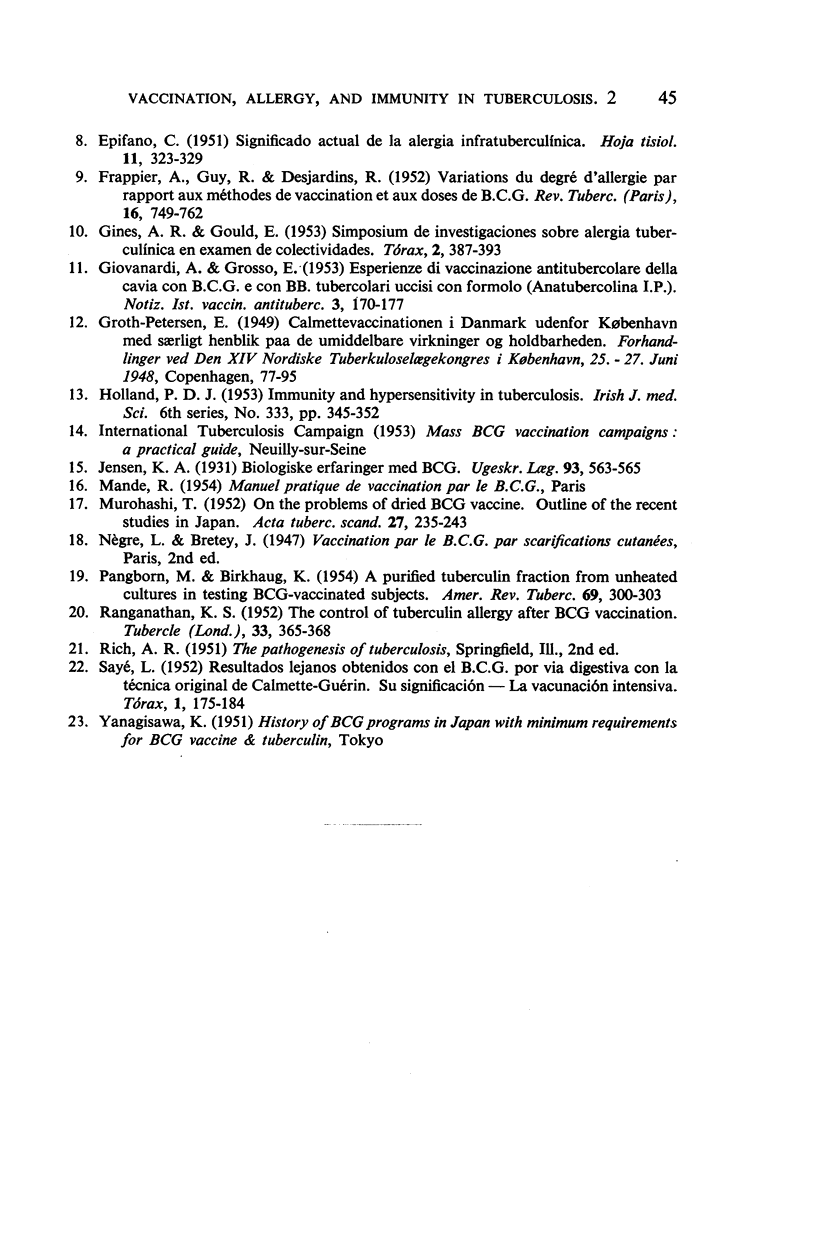
Selected References
These references are in PubMed. This may not be the complete list of references from this article.
- ARONSON J. D., McGETTIGAN M. The tuberculin reaction in relation to the local reaction to BCG vaccine in initially vaccinated and in previously vaccinated persons. J Immunol. 1951 Jun;66(6):715–724. [PubMed] [Google Scholar]
- BIRKHAUG K. Correlation of numbers of cutaneous BCG vaccination papules and subsequent tuberculin allergy and tuberculosis resistance in guinea pigs. Am Rev Tuberc. 1949 Nov;60(5):547–556. doi: 10.1164/art.1949.60.5.547. [DOI] [PubMed] [Google Scholar]
- DE ASSIS A. Rumbos y perspectivas de la vacunación con el BCG en el Brasil. Hoja Tisiol. 1953 Dec;13(4):325–339. [PubMed] [Google Scholar]
- DELACHAUX A., BERGIER D. Cuti-réactions au B.C.G. Schweiz Z Tuberk. 1950;7(1):54–62. [PubMed] [Google Scholar]
- EBINA T., ITO T., YAKUWA E., ITO K., TAKASE Y., EBINA A., UMETA Y. Recent studies on freeze-dried BCG vaccine. Acta Tuberc Scand. 1954;29(4):279–321. [PubMed] [Google Scholar]
- EPIFANIO C. Significado actual de la alergia infratuberculinica. Hoja Tisiol. 1951 Dec;11(4):323–329. [PubMed] [Google Scholar]
- FRAPPIER A., GUY R., DESJARDINS R. Variations du degré d'allergie par rapport aux méthodes de vaccination et aux doses de B.C.G. Rev Tuberc. 1952;16(9):749–762. [PubMed] [Google Scholar]
- GINES A. R., GOULD E. Simposium de investigaciones sobre alergia tuberculänica en examen de colectividades. Torax. 1953 Dec;2(4):387–393. [PubMed] [Google Scholar]
- HOLLAND P. D. Immunity and hypersensitivity in tuberculosis. Ir J Med Sci. 1953 Sep;(333):345–352. doi: 10.1007/BF02949754. [DOI] [PubMed] [Google Scholar]
- MUROHASHI T. On the problems of dried BCG vaccine; outline of the recent studies in Japan. Acta Tuberc Scand. 1952;27(3-5):235–243. [PubMed] [Google Scholar]
- PANGBORN M. C., BIRKHAUG C. A purified tuberculin fraction from unheated cultures in testing BCG-vaccinated subjects. Am Rev Tuberc. 1954 Feb;69(2):300–303. doi: 10.1164/art.1954.69.2.300. [DOI] [PubMed] [Google Scholar]
- RANGANATHAN K. S. The control of tuberculin allergy after BCG vaccination. Tubercle. 1952 Dec;33(12):365–368. doi: 10.1016/s0041-3879(52)80094-7. [DOI] [PubMed] [Google Scholar]
- SAYE L. Resultados lejanos obtenidos con el B.C.G. por vía digestiva con la técnica original de Calmette-Guérin, su significación, la vacunación intensiva. Torax. 1952 Aug;1(2):175–184. [PubMed] [Google Scholar]


